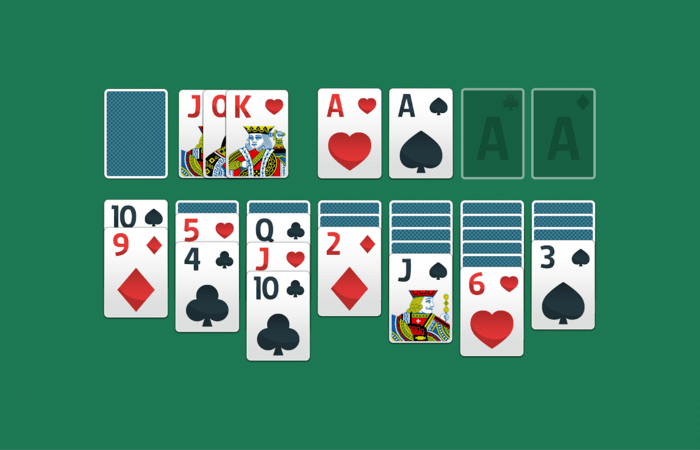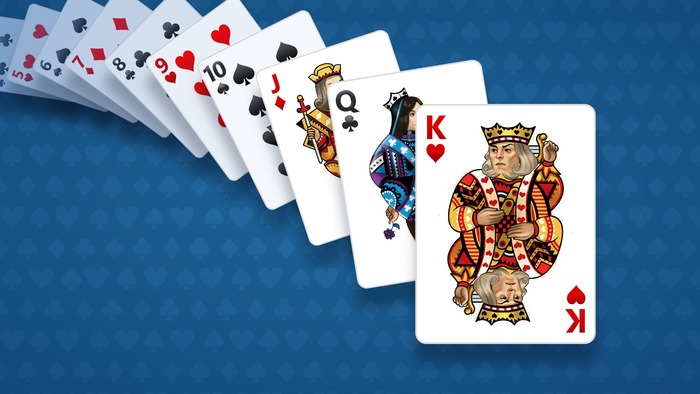Solitaire: From Classic Card Game to Online Phenomenon
Solitaire, a classic card game known for its intriguing combination of strategy and luck, has long been a beloved pastime. Its journey from physical decks to digital screens encapsulates a significant evolution in gaming culture. This article delves into the ascent of Solitaire as a popular online game, explores its various forms, and discusses its presence in competitive tournaments and the broader gaming community.

The Origins and Digital Rise of Solitaire
Solitaire, also known as Patience in some regions, has its origins in the late 18th century in Northern Europe and Scandinavia. Traditionally played as a solo pastime, it gained popularity across the globe over the centuries. The game’s digital revolution began in the early 1990s when Microsoft included a version of Klondike Solitaire in Windows 3.0.
This move was initially intended to help users get accustomed to the graphical user interface and the mouse’s drag-and-drop functionality. However, Solitaire quickly became a mainstay of PC gaming, introducing many to the world of digital card games.
The transition to online platforms further solidified Solitaire’s status as a gaming favorite. With the advent of the internet, numerous websites like Solitaires started offering various Solitaire games, enabling players to enjoy the game anywhere and at any time, significantly boosting its popularity.
Understanding the Rules of Solitaire
The most commonly played version of Solitaire is Klondike, which can be played in Turn 1 or Turn 3 modes. The goal in Solitaire is to arrange all the cards into four separate foundation piles, each aligned with a specific suit and organized in sequence from the Ace through to the King. The play area, known as the tableau, features seven columns of cards.
In every column, the top card is displayed with its face visible, while the others are positioned face-down. The game permits players to shift cards across these columns, following a rule of descending sequence and alternating the card colors between red and black.
In Turn 1 mode, players draw one card at a time from the stockpile, while in the more challenging Klondike Solitaire Turn 3 mode, three cards are drawn at once, but only the top card can be played. These variations offer different levels of difficulty and strategy, catering to a broad range of players.

Other Popular Variants of Solitaire
Solitaire’s digital popularity has led to the creation and spread of numerous variants, each offering a unique spin on the classic formula:
- FreeCell: Known for its almost entirely skill-based gameplay, FreeCell challenges players to build foundation piles using all cards dealt face-up, with the aid of four free cells for temporary storage.
- Spider Solitaire: This variant involves creating descending sequences of cards in the tableau to eliminate them from the game. It typically uses two decks and is known for its challenging gameplay.
- Pyramid: In Pyramid Solitaire, cards are arranged in a pyramid shape, and players aim to remove pairs of cards that add up to 13.
- TriPeaks: This variant features three peaks of cards that players must clear using a combination of skill and luck.
Solitaire in Competitive Play and Tournaments
The world of competitive Solitaire, encompassing a variety of its popular variants such as Klondike, FreeCell, and Spider, has been steadily growing, mirroring the game’s rise in online popularity. These tournaments and competitive events have become a significant aspect of the Solitaire gaming community, offering a platform for skilled players to showcase their strategies and quick-thinking abilities.
Online Tournaments
The most common form of competitive Solitaire takes place online. A variety of gaming websites and online platforms frequently organize Solitaire tournaments, drawing participants from all over the world. These tournaments vary in format, but most follow a similar structure:
- Speed-Based Challenges: Competitors are tasked with finishing a Solitaire game in the shortest time possible. The faster the game is completed, the higher the player’s score.
- High-Score Competitions: Some tournaments focus on achieving the highest possible score in a game, emphasizing efficiency and strategic moves.
- Elimination Rounds: In more competitive tournaments, players may go through several rounds, with the lowest-scoring players being eliminated after each round until a winner emerges.
Prizes and Recognition
Competitive Solitaire offers various incentives for participation. Rewards vary, including monetary prizes, gift vouchers, as well as medals and trophies for winners. Additionally, the recognition of being a top Solitaire player in a tournament can be a significant accomplishment for enthusiasts of the game.

The Community Aspect
One of the most appealing aspects of competitive Solitaire is the community it fosters. Individuals of diverse skill sets and backgrounds converge, sharing a common passion for the game. Online forums, social media groups, and live event gatherings provide spaces for players to interact, share experiences, and build friendships.
The Future of Competitive Solitaire
As online gaming continues to grow, so does the scope for competitive Solitaire. Advances in technology and gaming platforms are likely to offer even more immersive and engaging ways for players to compete, ensuring that the spirit of Solitaire as a competitive endeavor remains vibrant and continues to evolve.
Conclusion
Solitaire’s enduring appeal lies in its simple yet challenging nature, its adaptability to digital formats, and its ability to provide a solitary but deeply engaging gaming experience. As technology continues to evolve, Solitaire’s place in the gaming world seems secure, ready to entertain and challenge future generations of players.






